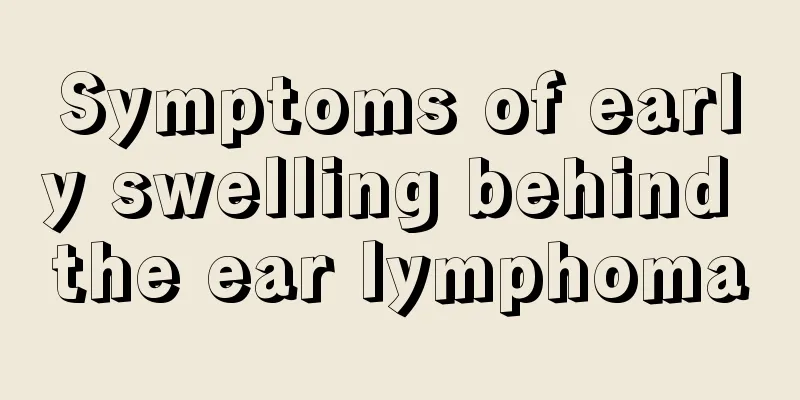Signs of Benzopyrene Epoxide Poisoning

|
Benzopyrene epoxide is a carcinogen. This compound easily combines with aerosols formed by various types of particles. Once inhaled into the lungs, it may cause lung cancer and cardiovascular diseases. Therefore, the signs of benzopyrene epoxide poisoning are also a matter of great concern to many people, and they hope to detect abnormalities in time. So, what are the signs of benzopyrene epoxide poisoning? Let’s take a look below. Health hazards Routes of entry: inhalation, ingestion, and percutaneous absorption. Health hazards: Irritating to eyes and skin. It is a carcinogen, teratogen and mutagen. Toxicological data and environmental behavior toxicity: It is the most toxic and potent carcinogen among polycyclic aromatic hydrocarbons. Acute toxicity LD50500mg/kg (mouse intraperitoneal); 50mg/kg (rat subcutaneous) Chronic toxicity: Living in an air environment containing BaP for a long time will cause it. BaP in the air is one of the most important factors causing lung cancer. Toxicity to aquatic organisms: 5μg/L, 12 days, microorganisms, inhibitory effect; 5mg/L, 13 hours, mollusk eggs, inhibitory effect, structural changes. Carcinogenic BaP is considered to be a highly active carcinogen, but not a direct carcinogen. It must be activated by mixed function oxidases in cell microsomes to become carcinogenic. After BaP enters the body, except for a small part that is excreted in its original form with the feces, a part is activated by the mixed function oxidase in the liver and lung cell microsomes and converted into dozens of metabolites. Among them, the conversion into hydroxyl compounds or quinones is a detoxification reaction; the conversion into epoxides, especially the conversion into 7,8-epoxide, is an activation reaction. The 7,8-epoxide is further metabolized to produce 7,8-dihydrodihydroxy-9,10-epoxybenzo[a]pyrene (as shown in the figure), which may be the ultimate carcinogen. This ultimate carcinogen has four isomers, among which (+)-BP-7β,8α-diol-9α,10α-epoxide-benzo[a]pyrene has been shown to be the most carcinogenic. It forms covalent bonds with DNA and causes DNA damage. If the DNA cannot be repaired or is repaired without restoration, the cells may become cancerous. The other three isomers also have carcinogenic effects. Animal tests, including oral, percutaneous, inhalation, and subcutaneous injection, all showed carcinogenicity. Many countries have conducted experiments on nine types of animals and adopted various routes of administration, and all of them have obtained positive reports of inducing cancer. Among PAHs, BaP is the most widespread and the most carcinogenic. BaP is not only widely present in the environment and relatively stable, but also has a certain correlation with the content of other polycyclic aromatic hydrocarbons. Therefore, BaP is generally regarded as a representative of atmospheric carcinogens. Teratogenicity 1000 mg/ kg, oral administration to pregnant rats, caused fetal teratogenesis. DNA mutation 40mg/kg, once, intraperitoneally in voles, multiple changes in chromosome tests. Mice, genetic phenotypes tested for multiple changes. Insects, microorganisms, genetic phenotyping experiments with multiple variations. Human cell culture DNA has multiple changes. Disposal method 1. Emergency treatment for leaks: Isolate the leaked contaminated area and set up warning signs around it. Emergency treatment personnel should wear self-contained breathing apparatus and chemical protective clothing. Do not come into direct contact with the leaked material, avoid creating dust, sweep it up carefully, and solidify it with cement, asphalt or appropriate thermoplastic materials before discarding. In case of large-scale leakage, collect and recycle it or dispose of it after harmless treatment. 2. Protective measures Respiratory protection: Generally no special protection is required, but it is recommended to wear a self-contained breathing apparatus in special circumstances. Eye protection: Wear safety glasses. Protective clothing: Wear polyethylene film anti-toxic clothing. Hand protection: Wear chemical-resistant gloves when necessary. Others: After work, take a shower and change clothes. Avoid prolonged and repeated exposure. Beware of its carcinogenicity. 3. First aid measures Skin contact : Take off contaminated clothes and rinse thoroughly with soap and water. Eye contact: Immediately open the upper and lower eyelids and rinse with running water for 15 minutes. Seek medical attention. Inhalation: Get out of the polluted environment and rinse the dust in the nasopharynx with water. Seek medical attention. Ingestion: If swallowed accidentally, rinse mouth thoroughly, drink water and induce vomiting. Seek medical attention. Fire extinguishing methods: carbon dioxide, dry powder, 1211 fire extinguishing agent, sand and soil. Using water may cause boiling and splashing. |
<<: Ureaplasma urealyticum positive is very stubborn
>>: What to do if myopia and presbyopia occur_Can presbyopia be treated
Recommend
Using mosquito coils to repel mosquitoes in summer is very harmful! Light this thing and the mosquitoes will disappear without a trace
With the arrival of summer, there are more mosqui...
What harm does paint smell do to people
Some people often smell paint because there are f...
Which hospital is the best and most authoritative for treating pancreatic cancer?
When treating pancreatic cancer, patients especia...
The main manifestations of advanced esophageal cancer
Advanced esophageal cancer refers to esophageal c...
How to treat lung cancer scientifically and effectively? Traditional Chinese medicine has two advantages in treating lung cancer
Lung cancer is not unfamiliar to everyone. Due to...
The function of a sleeping pillow
In people's daily life, pillows occupy a very...
Can I have a baby after rectal cancer surgery
Can I have a baby after rectal cancer surgery? Cu...
Cracked and peeling lips
In autumn and winter, the weather becomes cold an...
What are the fastest ways to get rid of acne?
Removing acne is an issue that many people hope t...
What are the dangers of low body temperature in babies
The human body has a normal body temperature. Alt...
How to get rid of damp insects at home
In summer we always talk about moisture-proofing,...
Will heat stroke cause convulsions
Heatstroke is more common in summer, so certain t...
Can Band-Aids be used after they expire?
Speaking of Band-Aids, everyone must be familiar ...
What are the effects and functions of green-skinned pears?
Pear is a cold fruit, especially suitable for peo...
How to cut the elbow
If you want to make your favorite pork elbow, you...









